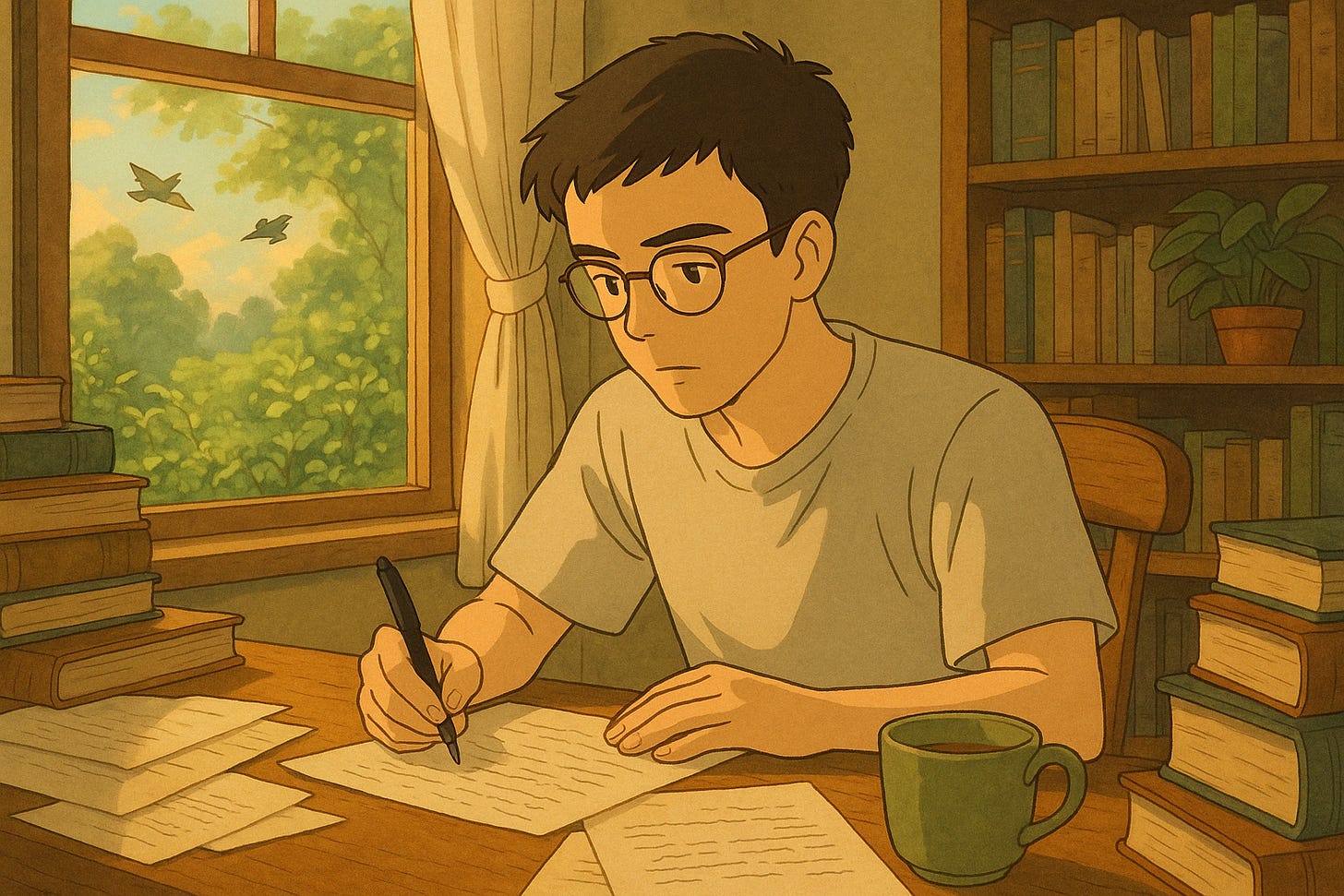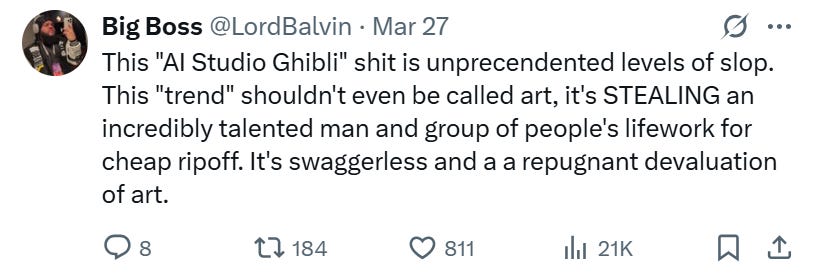Ghibli "Style" Is Dead; Long Live Studio Ghibli
The aesthetic went viral. The real thing went sacred.
“[A Chrysler 300] do look like a phantom until a phantom pull up.” - Katt Williams, The Pimp Chronicles Pt. 1
Chat GPT’s Viral Moment
For a few days, everyone online was obsessed with generating and posting Ghibli-style images. The new ChatGPT image model can produce “Studio Ghibli-style” art which, aesthetically (superficially) was nearly indistinguishable from a Spirited Away still.
Within a day of the model’s release, my timeline was flooded. The images all looked good, but that was also what made them all boring. The style was too ubiquitous. The uniqueness of the aesthetic disappeared almost instantly.
We say we want beauty, but we discover that no matter the immediate visual appeal, mass-produced images don’t satisfy any spiritual or artistic desire. They satisfy a dopamine itch at best and make us sick from indulgence at worst. What’s beautiful is what is rare, what is difficult, what not just feels touched by a person, but what we actually know was touched by a person.
Studio Ghibli is More than a Style
There was significant backlash to this trend. Critics pointed to copyright issues, artist displacement, and the rising tide of AI slop. True, true, and true.
BUT! I think what some of the anti-AI crowd doesn’t consider is that this explosion of Ghibli-style imagery won’t cheapen Studio Ghibli, but instead make it, the real thing, more valuable.
When everything starts to look like Ghibli, it becomes easier to see what actually makes Studio Ghibli different. The AI images get the colors and lines right, but they come with no story, context, spirit and soul. ChatGPT gave us the visual, but not the meaning. Studio Ghibli doesn’t just produce a recognizable aesthetic. What makes these films important is not how they look but how they feel.
The Ghibli-style trend lost its power quickly. With the aesthetic divorced from its soul, it flattened. In doing so, it made the real thing stand out even more.






